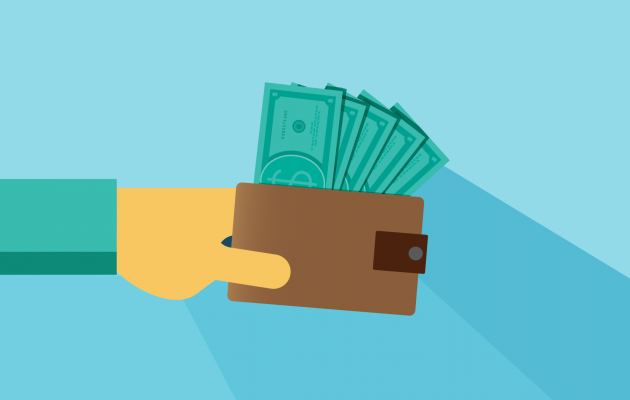How to Keep Your Financial Cool During COVID-19

Wow, have we ever seen a time like this before? Short answer: nope. The drumbeat of Coronavirus news can be very scary. If I may offer advice as a financial professional, it’s these three simple steps:
Stop. Breathe. Focus.
OK, now we can get down to work putting your essential living expenses in control during the COVID-19 economic crisis.
Step #1: Have “the talk” with your employer
This will likely be the toughest thing you will do in this period of financial assessment. And that is asking what the likelihood is for you being unemployed. It can be very emotional, for both of you. Whatever you do, stay cool, calm and professional. It will help, I promise you.
If the answer is “you’re fine, for now”, get a definition of what “for now” actually means in terms of the business operation. If your boss can’t say for sure, tell him or her you will be checking regularly (every month is not unwarranted given the times) and that you would appreciate an advance heads-up one way or the other. Also ask if there is another job you can cross-train for or do to stay employed.
An outcome of this talk might be the news of a reduction in salary and/or compensation. The sooner you get this news, the more time you have to prepare for it.
Of course, the answer you hear might be the very sad news your job is gone. Again, stay calm and professional as a confrontation does nobody any good. Ask for a severance, if your time in service or job position warrants that. Ask if the company will continue to pay health benefits for a period of time during your unemployment. Get a written job referral for use in a future job hunt. And of course, contact the State of California Employment Development Department (EDD) for filing an unemployment claim (UI). Click here for EDD contact information.
If your specific health insurance policy was discontinued with the lost job, you are entitled to employer-provided health insurance under the federal Consolidated Omnibus Budget Reconciliation Act (COBRA). You generally have 60-days to elect COBRA insurance and it typically lasts for 18-months. You have up to 60-days from termination to apply for health insurance coverage through the Affordable Care Act (ACA). Click here for the Covered California website.
Step #2: Take inventory of your financial accounts
Sure, financial account statements can be boring… until they’re not. And that would be now, since knowing exactly what you have in savings or asset as emergency funds and what is due in payments each month becomes more enthralling than reading your favorite novel. (OK, so maybe that’s a stretch, but hear me out.)
First, add up all your sources of income, amortized monthly. That would include a net paycheck if you are working or your pension or other disbursements if you are not working.
Next, itemize all the capital assets you have. This will be your savings accounts, retirement accounts, certificates (CD), market investment accounts, cash value (whole) life insurance, estimated home value and personal property value. The most valuable and meaningful are the so-called “liquid” assets, which have immediate cash value.
Then, itemize all monthly expenses. Be detailed with exactly what you spend and what you spend it on. Be honest with yourself about what you can cut (discretionary) and what you can’t (non-discretionary). Sure, you can budget for hamburger instead of steak, but you have to eat. And it’s not all ramen and frozen dinners forever, OK?
Finally, estimate your federal and state tax obligations. Close counts, but if you want to get closer, contact your professional tax advisor. Also, click here to learn about the IRS 90-day reprieve for tax payments.
By now, you should have an accurate idea of what your income is and what your expenses are. But you are not done yet.
Step #3: Make some key decisions
If you can see you will be running short of income paying for expenses, then it’s time to get creative. You will need to categorize best, medium or worst-case scenarios.
Best case basically means no or minimal change in your financial position. Lucky duck! In this case, consider debt consolidation, like refinancing a home or vehicle to cash in on lower interest rates. Accelerating credit card or other line of credit payments to create additional rainy-day emergency funds would make sense.
Medium case is your income is constrained but workable with some personal debt adjustments, but nothing too drastic. To give yourself some expense relief, try the following:
- If you don’t have to travel, don’t. Cancel all travel arrangements you have, directly with the carrier or lodging
- Home loan rates are at record low levels. Refinance to lower your payment
- If your home is already paid off, consider a home equity line of credit as a source of emergency funds
- Vehicle loan rates are back to record low levels. Refinance to lower your payments
The worst case is, well, worst, since you are dealing with a rather drastic change in your financial condition. The objective here is to provide significant expense relief and possibly asset recovery. It almost goes without saying that all discretionary expenses need to be eliminated. Then, look for ways to stretch your current obligations.
- If need be, sell the financed assets to eliminate the payment and collect any available additional cash
- Check with debtors to see if any payments have payment relief, like phone cable or internet service
- Defer tax payments per available programs
- File your taxes early if you know you have a tax refund coming
Step #4: The final do’s
Now is an excellent time to make sure your will or estate plan is prepared and clearly states your wishes. All your heirs will thank you for that. If your position is relatively secure, keep paying into your retirement fund and have an honest discussion with your financial planner over what your investment risk tolerance is now, in this new era.
Keep to a budget, like something I call the 50/30/20 plan: 50% of income to pay for necessities, 30% for recreation and fun and 20% for savings. Do be a source of emotional support to family and friends. Do donate your time and talents in your community when needed.
Step #5: The final don’t(s)
With all the uncertainty in the financial markets, don’t sell investments out of fear and don’t short term invest out of greed. Both could have poor outcomes, as there is an end to COVID-19 in the not so distant future.
Don’t confuse capital for income, in that capital is something earned and should be retained for as long as practicable, while income is transitory and consumed regularly. That includes cash value life insurance which is a final “break glass in case of emergency” resource or any other rainy-day funds.
And with that metaphor, let me leave you with this. Better days are ahead. Your financial job is to get there. Remember to stop, breathe and focus. And before you know it, better days will be here.


Join the discussion